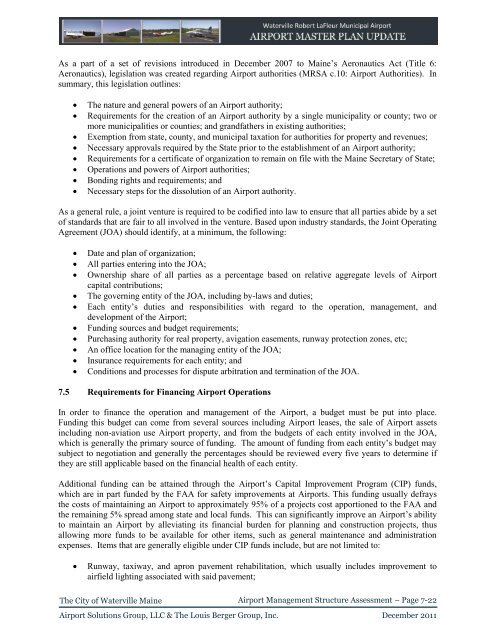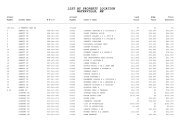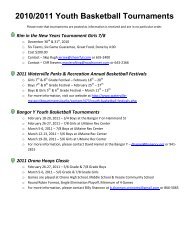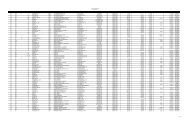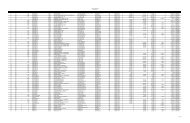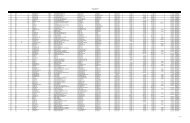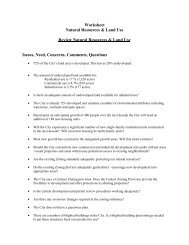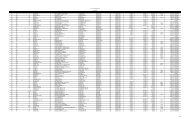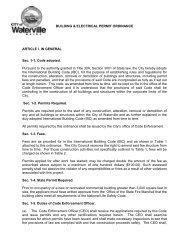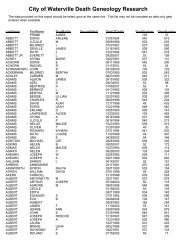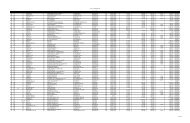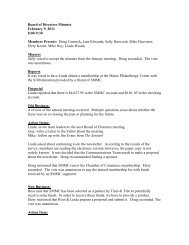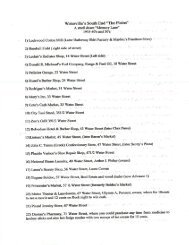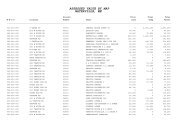Airport Master Plan 2012 - City of Waterville
Airport Master Plan 2012 - City of Waterville
Airport Master Plan 2012 - City of Waterville
You also want an ePaper? Increase the reach of your titles
YUMPU automatically turns print PDFs into web optimized ePapers that Google loves.
As a part <strong>of</strong> a set <strong>of</strong> revisions introduced in December 2007 to Maine’s Aeronautics Act (Title 6:<br />
Aeronautics), legislation was created regarding <strong>Airport</strong> authorities (MRSA c.10: <strong>Airport</strong> Authorities). In<br />
summary, this legislation outlines:<br />
<br />
<br />
<br />
<br />
<br />
<br />
<br />
<br />
The nature and general powers <strong>of</strong> an <strong>Airport</strong> authority;<br />
Requirements for the creation <strong>of</strong> an <strong>Airport</strong> authority by a single municipality or county; two or<br />
more municipalities or counties; and grandfathers in existing authorities;<br />
Exemption from state, county, and municipal taxation for authorities for property and revenues;<br />
Necessary approvals required by the State prior to the establishment <strong>of</strong> an <strong>Airport</strong> authority;<br />
Requirements for a certificate <strong>of</strong> organization to remain on file with the Maine Secretary <strong>of</strong> State;<br />
Operations and powers <strong>of</strong> <strong>Airport</strong> authorities;<br />
Bonding rights and requirements; and<br />
Necessary steps for the dissolution <strong>of</strong> an <strong>Airport</strong> authority.<br />
As a general rule, a joint venture is required to be codified into law to ensure that all parties abide by a set<br />
<strong>of</strong> standards that are fair to all involved in the venture. Based upon industry standards, the Joint Operating<br />
Agreement (JOA) should identify, at a minimum, the following:<br />
<br />
<br />
<br />
<br />
<br />
<br />
<br />
<br />
<br />
<br />
Date and plan <strong>of</strong> organization;<br />
All parties entering into the JOA;<br />
Ownership share <strong>of</strong> all parties as a percentage based on relative aggregate levels <strong>of</strong> <strong>Airport</strong><br />
capital contributions;<br />
The governing entity <strong>of</strong> the JOA, including by-laws and duties;<br />
Each entity’s duties and responsibilities with regard to the operation, management, and<br />
development <strong>of</strong> the <strong>Airport</strong>;<br />
Funding sources and budget requirements;<br />
Purchasing authority for real property, avigation easements, runway protection zones, etc;<br />
An <strong>of</strong>fice location for the managing entity <strong>of</strong> the JOA;<br />
Insurance requirements for each entity; and<br />
Conditions and processes for dispute arbitration and termination <strong>of</strong> the JOA.<br />
7.5 Requirements for Financing <strong>Airport</strong> Operations<br />
In order to finance the operation and management <strong>of</strong> the <strong>Airport</strong>, a budget must be put into place.<br />
Funding this budget can come from several sources including <strong>Airport</strong> leases, the sale <strong>of</strong> <strong>Airport</strong> assets<br />
including non-aviation use <strong>Airport</strong> property, and from the budgets <strong>of</strong> each entity involved in the JOA,<br />
which is generally the primary source <strong>of</strong> funding. The amount <strong>of</strong> funding from each entity’s budget may<br />
subject to negotiation and generally the percentages should be reviewed every five years to determine if<br />
they are still applicable based on the financial health <strong>of</strong> each entity.<br />
Additional funding can be attained through the <strong>Airport</strong>’s Capital Improvement Program (CIP) funds,<br />
which are in part funded by the FAA for safety improvements at <strong>Airport</strong>s. This funding usually defrays<br />
the costs <strong>of</strong> maintaining an <strong>Airport</strong> to approximately 95% <strong>of</strong> a projects cost apportioned to the FAA and<br />
the remaining 5% spread among state and local funds. This can significantly improve an <strong>Airport</strong>’s ability<br />
to maintain an <strong>Airport</strong> by alleviating its financial burden for planning and construction projects, thus<br />
allowing more funds to be available for other items, such as general maintenance and administration<br />
expenses. Items that are generally eligible under CIP funds include, but are not limited to:<br />
<br />
Runway, taxiway, and apron pavement rehabilitation, which usually includes improvement to<br />
airfield lighting associated with said pavement;<br />
The <strong>City</strong> <strong>of</strong> <strong>Waterville</strong> Maine<br />
<strong>Airport</strong> Management Structure Assessment – Page 7-22<br />
<strong>Airport</strong> Solutions Group, LLC & The Louis Berger Group, Inc. December 2011


